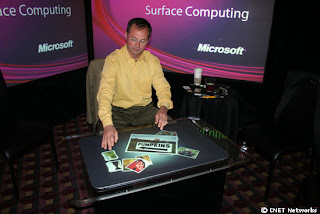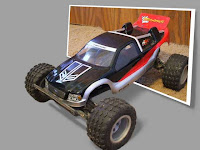 Microsoft released their newest innovation in computer technology today. Their Milan surface table top computer is run entirely on touch manipulation. There is no mouse and no keyboard. It looks very similar to what Jeff Hahn demonstrated at the TED convention earlier this year. Read our write up on it here. The implications for the creative market are endless with a tool like this, but without a keyboard how do you blog?
Microsoft released their newest innovation in computer technology today. Their Milan surface table top computer is run entirely on touch manipulation. There is no mouse and no keyboard. It looks very similar to what Jeff Hahn demonstrated at the TED convention earlier this year. Read our write up on it here. The implications for the creative market are endless with a tool like this, but without a keyboard how do you blog?Microsoft hopes 'Milan' table PC has magic touch: by Ina Fried for CNET News
At first glance, Microsoft's secret project looks like a 2007 version of the sit-down arcade game Ms. Pac Man.
But if this machine were running the game, you could just take your finger and flick away the monsters chasing the heroine.Microsoft on Wednesday is taking the wraps off "Milan," five years in the making and the first in what the company hopes will be a long line of "surface computers." The Microsoft Surface tabletop PC, for which the company has created both the hardware and software, offers shades of the technology seen in the sci-fi thriller Minority Report. The whole unit is controlled entirely through touch; there's no mouse or keyboard.
To paint, people can pick up a paint brush or just dip their fingers in virtual paint cups. Sharing photos is similarly intuitive. A stack of pictures can be easily sorted through and shared. To resize a photo, just stretch two fingers apart. Pivot the fingers and the image rotates. More than one person can be interacting with the computer at a time.









